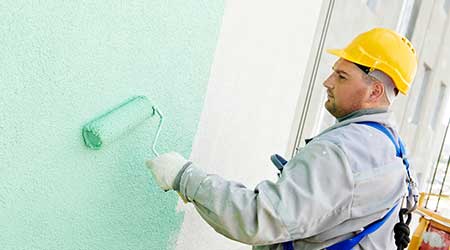 To help maintenance managers specify the most appropriate products for their facility’s needs, manufacturers of paints and coatings have continued to improve their existing products.
To help maintenance managers specify the most appropriate products for their facility’s needs, manufacturers of paints and coatings have continued to improve their existing products.Paints and Coatings: Successful Specification
New-generation paints and coatings can only deliver the desired performance if managers understand the type and condition of substrates.
The final key step in planning paint and coating applications is selecting the most appropriate product for the project. The list of key selection factors from leading paint manufacturers includes: coverage and hiding; finish appearance; cleanability; low splatter; thick consistency; fade, moisture, scuff, and chip resistance; and a guarantee of a full refund for life or specific number of years. The list of exterior selection factors also includes: peel and blister resistance; adhesion; hiding; mildew, fade, and chalk resistance; and a guarantee.
Another essential step in specifying paints and coatings is knowing the type of substrate involved. One basic test to determine whether the existing paint is latex or oil-based is to rub an inconspicuous place with a latex-solvent-soaked cloth or nail polish remover. If the paint comes off, the surface is latex. Latex will not adhere to existing oil-based paint. Workers can remove the latex coating by washing with one-third ammonia cleaner and two-thirds water, keeping the surface wet while scraping off the latex surface with a wide putty knife or scraper.
Workers can give a fresh look to walls and ceilings by washing with an ammonia cleaner or trisodium phosphate (TSP). TSP is a very effective cleaner, but workers must read material safety data sheet information due to TSP’s tendency to irritate eyes, skin, and respiratory systems. It is essential that they use personal protection using this chemical.
Finally, many layers of old, oil-based paint can be a challenge because workers should not disturb the surface by scraping or sanding until they are sure it does not contain lead. They can use a lead test kit, and if the results indicate the presence of lead, managers can bring in expert help for determining the best method to use for the specific conditions. There are several methods, so it pays to find the best for specific conditions. Proper personal protective equipment, such as a lead respirator, lead protective clothing, and lead dust control for the work site are essential.
Thomas Westerkamp is a maintenance and engineering management consultant and president of the work management division of Westerkamp Group LLC, www.westerkampgroup.com.
Related Topics:















